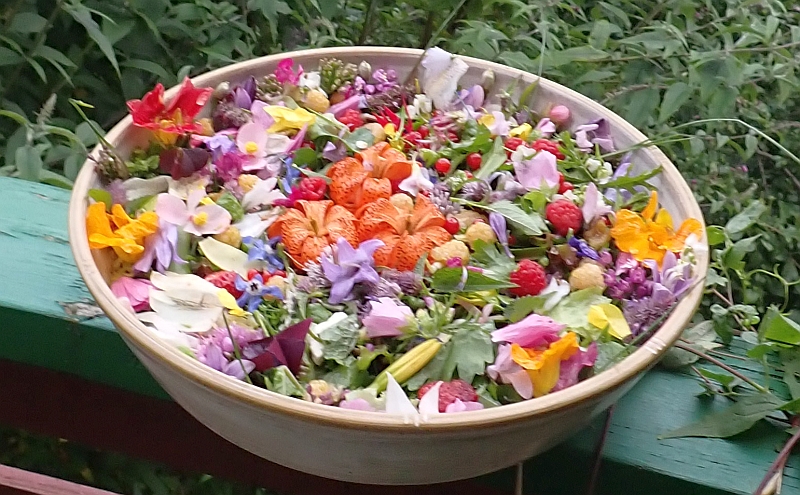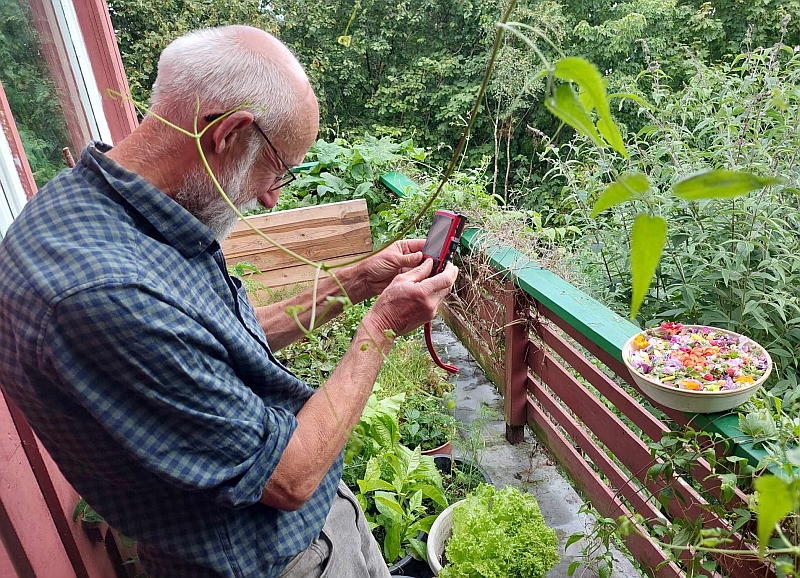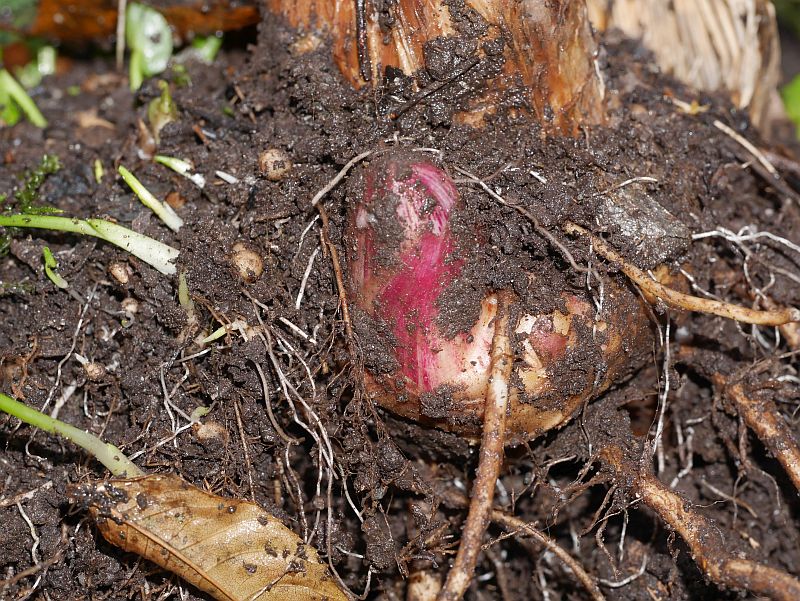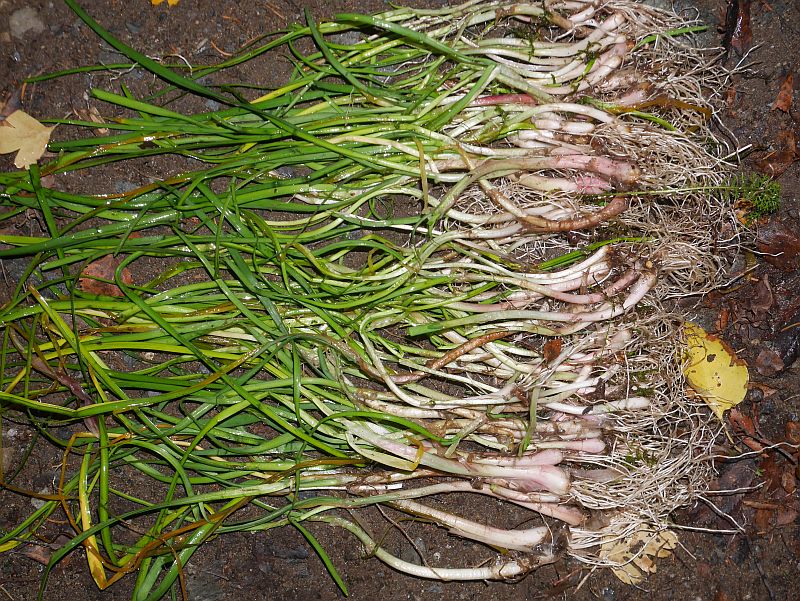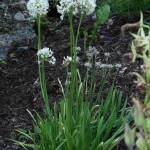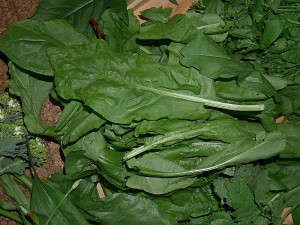To celebrate our good friends’ Jurgen Wegter and Ingvild Haga’s 50th birthdays together with Meg’s 50-year anniversary of arriving in Europe for the first time (in Southampton near where I lived at the time) as well as my 50 year anniversary of leaving school and a memorable holiday with 20-30 school friends in Newton Ferrers in Devon, we made a special gourmet dinner of green mac-cheese. It had masses of veg mixed in – the year’s first broad beans and swiss chard, chicory, common sow thistle (Sonchus oleraceus), Allium senescens leaves, shallots and garlic from last year, rehydrated winter chantarelles, golpar – ground seed of hogweed – Heracleum spp., together with ramsons salt, chili, sun dried tomatoes and mustard, all in a wholegrain spelt white sauce with wholegrain spelt pasta; it was topped with alpine bistort bulbils).
Not to be left out, the Extreme Salad Man contributed one of his Meditteranean diet inspired multispecies salads commemorating it is now almost 20 years since he put together a salad from home grown ingredients in Malvik comprising 537 ingredients. something the world hasn’t seen before or since (see https://www.edimentals.com/blog/?p=18997). The record was set on 24th August 2003. This time there were a mere 106 ingredients….sad to see, but he must be losing it….
Thanks to Jurgen for the salad pictures: